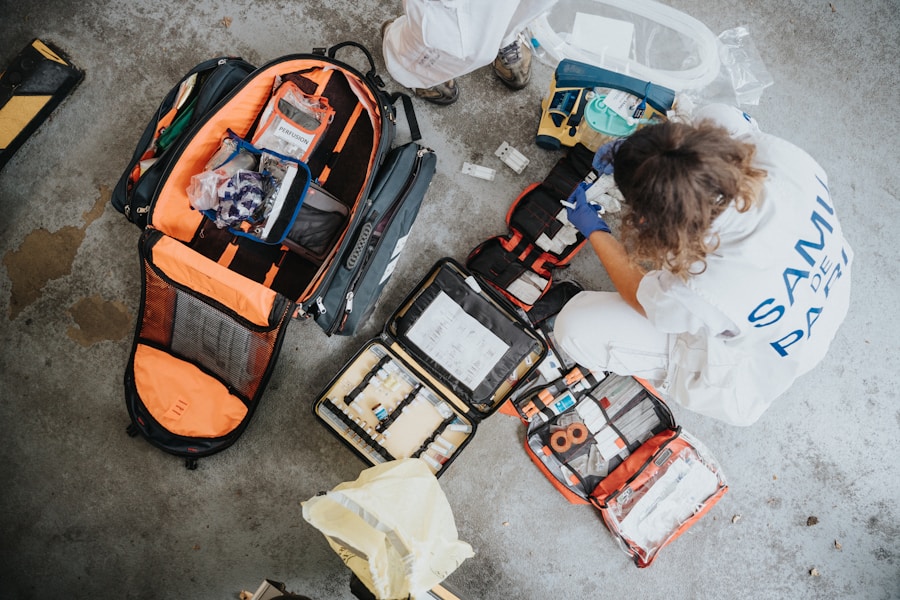
Avoiding Catastrophe: The Top Mistakes to Avoid When Creating a Disaster Recovery Plan
In today’s fast-paced and technology-driven world, many businesses underestimate the importance of having a disaster recovery plan in place. They often assume that disasters will never happen to them, or that their current backup solutions are sufficient to handle any potential issues. However, this mindset can be extremely detrimental to the long-term success and stability of a business. Without a comprehensive disaster recovery plan, businesses are at risk of losing critical data, experiencing prolonged downtime, and facing significant financial losses. It is essential for businesses to recognize the potential impact of disasters and take proactive measures to protect their operations.
Furthermore, underestimating the importance of a disaster recovery plan can lead to a false sense of security. Many businesses believe that they are immune to disasters or that they can quickly recover from any potential issues. However, the reality is that disasters can strike at any time and without warning. Without a solid plan in place, businesses may find themselves scrambling to recover from the aftermath of a disaster, leading to chaos, confusion, and potential long-term damage to their reputation and bottom line. It is crucial for businesses to understand that having a robust disaster recovery plan is not just a luxury, but a necessity for ensuring the continuity and resilience of their operations.
Failing to Identify and Prioritize Critical Business Functions
Another common mistake that businesses make when it comes to disaster recovery planning is failing to identify and prioritize critical business functions. Many businesses assume that all of their operations are equally important and should be treated with the same level of urgency in the event of a disaster. However, this approach can be counterproductive and lead to inefficiencies in the recovery process. It is essential for businesses to conduct a thorough assessment of their operations and identify which functions are critical to their day-to-day operations and overall success. By prioritizing these critical functions, businesses can ensure that they are able to recover quickly and effectively in the event of a disaster.
Furthermore, failing to identify and prioritize critical business functions can lead to unnecessary delays and confusion during the recovery process. Without a clear understanding of which functions are most important, businesses may waste valuable time and resources trying to recover non-essential operations, while neglecting the areas that are crucial to their survival. This can result in prolonged downtime, increased financial losses, and potential damage to their reputation. It is imperative for businesses to take the time to identify and prioritize their critical business functions as part of their disaster recovery planning efforts.
Neglecting to Test and Update the Disaster Recovery Plan Regularly
One of the most common mistakes that businesses make with their disaster recovery planning is neglecting to test and update their plans regularly. Many businesses create a disaster recovery plan and then simply set it aside, assuming that it will be sufficient to handle any potential issues that may arise. However, this approach can be extremely risky and leave businesses vulnerable to unforeseen challenges. It is essential for businesses to regularly test and update their disaster recovery plans to ensure that they are effective and up-to-date.
Furthermore, neglecting to test and update the disaster recovery plan regularly can lead to complacency and a false sense of security. Businesses may believe that their plans are foolproof, only to discover that they are outdated or ineffective when a disaster actually strikes. This can result in significant delays in the recovery process, increased financial losses, and potential damage to their reputation. It is crucial for businesses to recognize the importance of regularly testing and updating their disaster recovery plans to ensure that they are prepared for any potential challenges that may arise.
Relying Solely on Onsite Data Storage and Backup Solutions
Another common mistake that businesses make with their disaster recovery planning is relying solely on onsite data storage and backup solutions. Many businesses assume that storing their data on-premises is sufficient to protect them from potential disasters, such as fires, floods, or cyber-attacks. However, this approach can be extremely risky and leave businesses vulnerable to significant data loss and downtime. It is essential for businesses to recognize the limitations of onsite data storage and backup solutions and take proactive measures to protect their data.
Furthermore, relying solely on onsite data storage and backup solutions can lead to a false sense of security. Businesses may believe that their data is safe and secure, only to discover that it has been compromised or lost in the event of a disaster. This can result in significant financial losses, prolonged downtime, and potential damage to their reputation. It is crucial for businesses to diversify their data storage and backup solutions by utilizing offsite or cloud-based options to ensure the safety and accessibility of their critical data in the event of a disaster.
Overlooking the Importance of Employee Training and Communication
One critical aspect of disaster recovery planning that is often overlooked by businesses is the importance of employee training and communication. Many businesses assume that their employees will know what to do in the event of a disaster or that they can simply rely on their IT team to handle any potential issues. However, this approach can be extremely detrimental to the overall success of a business’s recovery efforts. It is essential for businesses to invest in comprehensive employee training and communication strategies to ensure that everyone is prepared and informed in the event of a disaster.
Furthermore, overlooking the importance of employee training and communication can lead to chaos and confusion during the recovery process. Without clear guidance and communication channels in place, employees may not know how to respond or what is expected of them in the event of a disaster. This can result in delays in the recovery process, increased downtime, and potential damage to the business’s operations. It is imperative for businesses to prioritize employee training and communication as part of their disaster recovery planning efforts to ensure a smooth and effective response in the event of a disaster.
Ignoring the Potential Impact of External Factors on Disaster Recovery
Another common mistake that businesses make with their disaster recovery planning is ignoring the potential impact of external factors on their ability to recover from a disaster. Many businesses focus solely on internal challenges, such as data loss or system failures, without considering how external factors, such as supply chain disruptions or regulatory changes, could impact their recovery efforts. However, this approach can be extremely short-sighted and leave businesses vulnerable to unforeseen challenges. It is essential for businesses to take a holistic approach to disaster recovery planning and consider how external factors could impact their ability to recover from a disaster.
Furthermore, ignoring the potential impact of external factors on disaster recovery can lead to significant delays and setbacks in the recovery process. Businesses may find themselves unprepared for external challenges that arise in the aftermath of a disaster, leading to increased downtime, financial losses, and potential damage to their reputation. It is crucial for businesses to conduct a thorough assessment of potential external factors that could impact their recovery efforts and take proactive measures to mitigate these risks as part of their disaster recovery planning efforts.
Failing to Establish Clear Roles and Responsibilities for Disaster Recovery Team
Finally, one critical mistake that businesses make with their disaster recovery planning is failing to establish clear roles and responsibilities for their disaster recovery team. Many businesses assume that everyone will know what is expected of them in the event of a disaster or that they can simply rely on their IT team to handle all aspects of the recovery process. However, this approach can be extremely detrimental to the overall success of a business’s recovery efforts. It is essential for businesses to clearly define roles and responsibilities for their disaster recovery team members to ensure a coordinated and effective response in the event of a disaster.
Furthermore, failing to establish clear roles and responsibilities for the disaster recovery team can lead to confusion and inefficiencies during the recovery process. Without clear guidance on who is responsible for what tasks, team members may duplicate efforts or overlook critical aspects of the recovery process. This can result in prolonged downtime, increased financial losses, and potential damage to the business’s operations. It is imperative for businesses to take the time to clearly define roles and responsibilities for their disaster recovery team members as part of their overall planning efforts.
In conclusion, it is essential for businesses to recognize the potential impact of disasters on their operations and take proactive measures to protect themselves from potential challenges. By avoiding common mistakes such as underestimating the importance of a disaster recovery plan, failing to identify critical business functions, neglecting regular testing and updates, relying solely on onsite data storage, overlooking employee training and communication, ignoring external factors, and failing to establish clear roles and responsibilities for their disaster recovery team members, businesses can ensure that they are prepared for any potential challenges that may arise. By taking a comprehensive approach to disaster recovery planning and addressing these common mistakes, businesses can minimize downtime, financial losses, and potential damage to their reputation in the event of a disaster.


